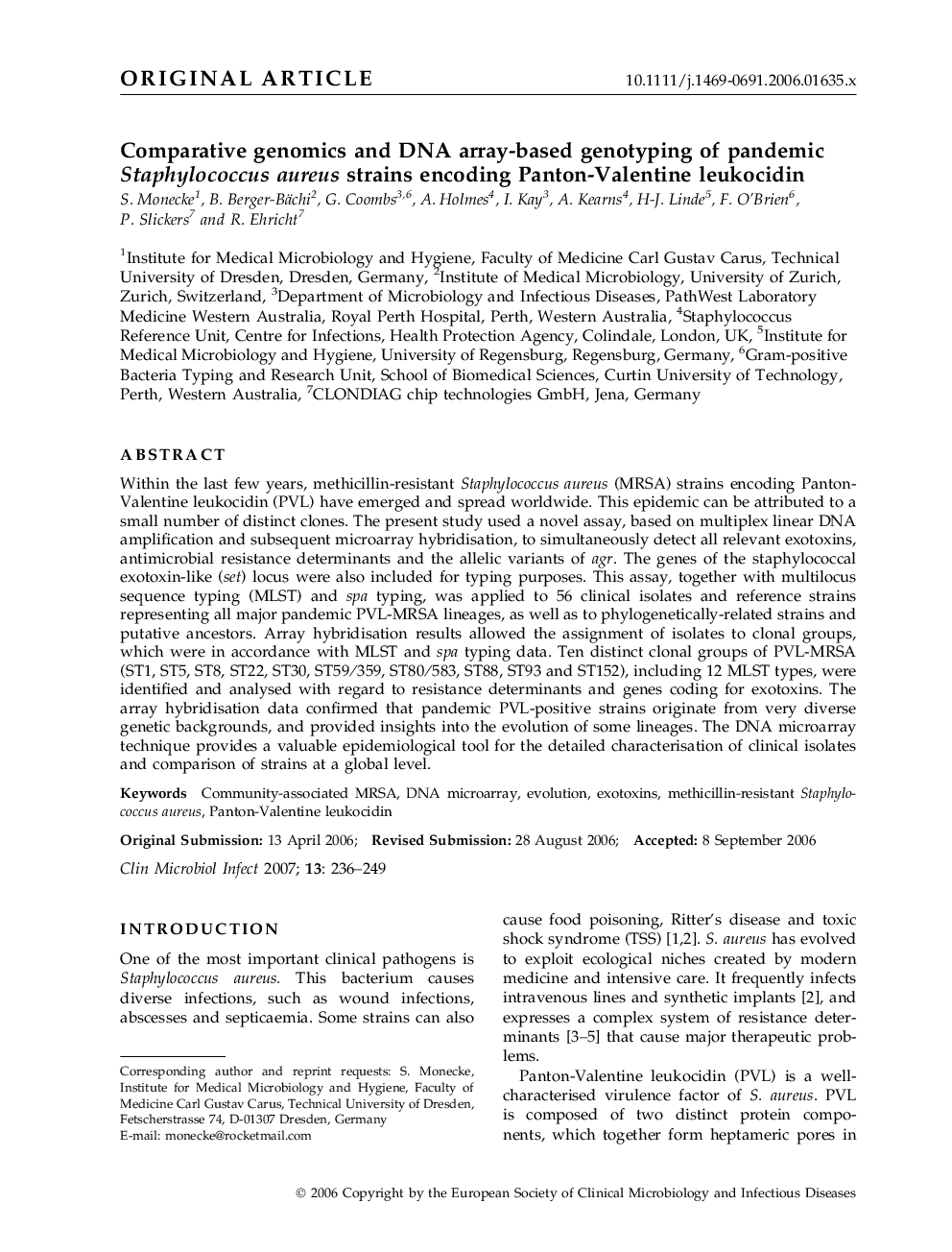| Article ID | Journal | Published Year | Pages | File Type |
|---|---|---|---|---|
| 6131368 | Clinical Microbiology and Infection | 2007 | 14 Pages |
Abstract
Within the last few years, methicillin-resistant Staphylococcus aureus (MRSA) strains encoding Panton-Valentine leukocidin (PVL) have emerged and spread worldwide. This epidemic can be attributed to a small number of distinct clones. The present study used a novel assay, based on multiplex linear DNA amplification and subsequent microarray hybridisation, to simultaneously detect all relevant exotoxins, antimicrobial resistance determinants and the allelic variants of agr. The genes of the staphylococcal exotoxin-like (set) locus were also included for typing purposes. This assay, together with multilocus sequence typing (MLST) and spa typing, was applied to 56 clinical isolates and reference strains representing all major pandemic PVL-MRSA lineages, as well as to phylogenetically-related strains and putative ancestors. Array hybridisation results allowed the assignment of isolates to clonal groups, which were in accordance with MLST and spa typing data. Ten distinct clonal groups of PVL-MRSA (ST1, ST5, ST8, ST22, ST30, ST59/359, ST80/583, ST88, ST93 and ST152), including 12 MLST types, were identified and analysed with regard to resistance determinants and genes coding for exotoxins. The array hybridisation data confirmed that pandemic PVL-positive strains originate from very diverse genetic backgrounds, and provided insights into the evolution of some lineages. The DNA microarray technique provides a valuable epidemiological tool for the detailed characterisation of clinical isolates and comparison of strains at a global level.
Keywords
Related Topics
Life Sciences
Immunology and Microbiology
Microbiology
Authors
S. Monecke, B. Berger-Bächi, G. Coombs, A. Holmes, I. Kay, A. Kearns, H-J. Linde, F. O'Brien, P. Slickers, R. Ehricht,
